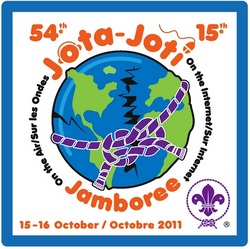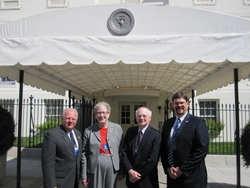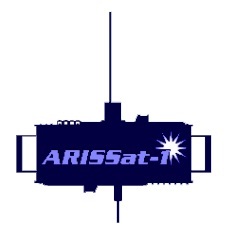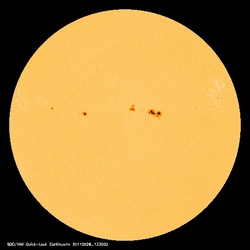 September 29, 2011 John E. Ross, KD8IDJ, Editor
| ||||||||
+ Available on ARRL Audio News. + On the Air: Scouts to Take to the Airwaves for the 54th Jamboree on the Air
Each year, more than 500,000 Scouts in more than 100 countries take to the airwaves on the third full weekend in October -- and this year will be no different. The Jamboree On The Air (JOTA) is a Scouting and Amateur Radio event sponsored by the World Scout Bureau of the World Organization of the Scout Movement. JOTA is an annual event where Boy Scouts, Girl Scouts and Girl Guides from all over the world speak to each other via Amateur Radio. Since 1958 -- when the first Jamboree on the Air was held -- millions of Scouts have met through this event. Many contacts made during JOTA have resulted in pen pals and links between Scout troops that have lasted many years. The radio stations are operated by radio amateurs, and many Scouts and leaders hold licenses and have their own stations. The majority of JOTA Scouts participate through stations operated by local radio clubs and individual hams. Read more here. + ARRL Briefs White House Staff on Amateur Radio's Capabilities During Emergencies
On September 12, at the invitation of White House Cybersecurity Coordinator Howard A. Schmidt, W7HAS, the ARRL briefed several members of the National Security Staff on the capabilities of the Amateur Radio Service to communicate in emergencies. "The White House is looking for ways that the great work of Amateur Radio operators can continue to support emergencies in the future with particular attention to increased use and dependency on Internet-based technologies," Schmidt said. The ARRL presentation, conducted by Emergency Preparedness Manager Mike Corey, W5MPC -- along with President Kay Craigie, N3KN, and Chief Executive Officer David Sumner, K1ZZ -- focused on Amateur Radio's current and evolving capabilities to provide Internet messaging connectivity. + Amateur Radio in Space: Take the ARISSat-1 Survey
AMSAT is inviting radio amateurs to complete a 19-question survey regarding ARISSat-1. "Please take a few minutes to answer the questions," said Steven Bible, N7HPR. "The survey results will be posted to the official ARISSat-1 website." ARISSat-1 was deployed from the International Space Station in August 2011 and is active on the following frequencies and modes:
+ Amateur Radio in Space: AMSAT Sponsors ARISSat-1 Re-entry Contest
AMSAT Secretary Alan Biddle, WA4SCA, said the ARISSat-1 Team is looking for entries in the Chicken Little Contest. This is your opportunity to calculate or guess when ARISSat-1 falls out of orbit. This is defined as the time it crosses an altitude of 78 kilometers, which is considered to be the point of no return. "This involves your prognostications, calculations, guesses, darts-in-the-calendar submissions for when ARRISSat-1 makes its final orbit," Biddle said. "We have a fair number of submissions from all over the world from adults, but very few from students. If you know of one who might be interested, encourage them to enter." Read more here. + At the Workbench: The Deadline for the Third ARRL Homebrew Challenge Is Approaching
The ARRL has sponsored two Homebrew Challenges in the past, designed to test our members' design and construction skills by making useful amateur gear at low cost -- and sharing their results with our members. Our first ARRL Homebrew Challenge, announced in QST for August 2006, required the construction of a 40 meter, 5 W voice and CW transceiver built for less than $50 of new parts. The Second Homebrew Challenge, announced in February 2009, resulted in a number of creative designs of low cost 50 W linear amplifiers to follow the transceiver -- two for about $30, as well as a multiband amplifier with many features for somewhat more. The deadline for the Third Homebrew Challenge is Tuesday, November 1. Read more here. ARRL Executive Committee to Meet in Virginia this Weekend The ARRL Executive Committee will meet October 1 in Virginia. The agenda for the meeting is now available. According to the ARRL By-Laws, the Executive Committee is assigned specific responsibility for:
+ ARRL Invites Nominations for 2011 International Humanitarian Award Nominations are open for the 2011 ARRL International Humanitarian Award. This award is conferred upon an amateur or amateurs who demonstrate devotion to human welfare, peace and international understanding through Amateur Radio. The League established the annual prize to recognize those radio amateurs who have used ham radio to provide extraordinary service to others in times of crisis or disaster. As one of the few telecommunication services that allows people throughout the world from all walks of life to meet and talk with each other, Amateur Radio spreads goodwill across political boundaries. The ARRL International Humanitarian Award recognizes the Amateur Radio Service's unique role in international communication and the assistance amateurs regularly provide to people in need. Nominations should include a summary of the nominee's actions that qualify the individual (or individuals) for this award, plus verifying statements from at least two people having first-hand knowledge of the events warranting the nomination. These statements may be from an official of a group (for example, the American Red Cross, The Salvation Army, a local or state emergency management official) that benefited from the nominee's particular Amateur Radio contribution. Nominations should include the names and addresses of all references. Read more here. Solar Update
Tad "The Sun shines forever" Cook, K7RA, reports: Our Sun has been very active this past week, with the average solar flux rising nearly 12 points to 155.5, while the average daily sunspot numbers dropped nearly 41 points to 96.1. This implies fewer, but more intense, sunspots. A huge sunspot group numbered 1302 emerged on September 22. This was the source of a coronal mass ejection that triggered an immense geomagnetic storm. The planetary A index peaked at 67 on September 26, followed by 30 the next day and 24 on September 28. The planetary K index reached 8 for two of the three-hour reporting periods on September 26, indicating an intense geomagnetic storm. The resulting aurora was observed in many places, including Maine, Massachusetts, Michigan, Minnesota, New York, North Dakota and South Dakota. On September 22, there was a major X1.4 class solar flare at 1100 UTC, with a large CME, but this was when sunspot 1302 was just coming over the horizon, so it wasn't Earth-directed. On September 24, sunspot group 1302 produced a larger X1.9 flare. Currently, the latest forecast from NOAA/USAF has solar flux for September 29-October 7 at 130, 130, 125, 120, 120, 115, 110, 110 and 140, and then 145 on October 8-10 and 140 on October 11-17. The predicted planetary A index is 12, 5 and 8 on September 29 through October 1, then 5 on October 2-7, then 8, 15, 12 and 8 on October 8-11 and 5 on October 12-21. Look for more information on the ARRL website on Friday, September 30. For more information concerning radio propagation, visit the ARRL Technical Information Service Propagation page. This week's "Tad Cookism" is brought to you by Bananarama's Through a Child's Eyes. + ARRL Invites Members to Express Opinions in QST
Each month in QST, the ARRL devotes a page to print letters from its members. This is a chance for you to express your opinions -- good or bad -- on ham radio-related matters. Your opinion counts! Send your letters electronically to qst@arrl.org or via postal mail to Correspondence, 225 Main St, Newington, CT 06111. You can also fax your letters to 860-594-0259. We read every letter received, but we can only publish a few each month. We reserve the right to edit your letter for clarity and to fit the available page space. Letters published in QST may also appear in other ARRL media. The ARRL assumes no responsibility for statements made by correspondents. This Week on the Radio This week:
Next week:
All dates, unless otherwise stated, are UTC. See the ARRL Contest Branch page, the ARRL Contest Update and the WA7BNM Contest Calendar for more information. Looking for a Special Event station? Be sure to check out the ARRL Special Event Stations Web page. Upcoming ARRL Section, State and Division Conventions and Events
To find a convention or hamfest near you, click here. ARRL -- Your One-Stop Resource for Amateur Radio News and Information Join or Renew Today! ARRL membership includes QST, Amateur Radio's most popular and informative journal, delivered to your mailbox each month. Subscribe to NCJ -- the National Contest Journal. Published bi-monthly, features articles by top contesters, letters, hints, statistics, scores, NA Sprint and QSO Parties. Subscribe to QEX -- A Forum for Communications Experimenters. Published bi-monthly, features technical articles, construction projects, columns and other items of interest to radio amateurs and communications professionals. Free of charge to ARRL members: Subscribe to the ARES E-Letter (monthly public service and emergency communications news), the ARRL Contest Update (bi-weekly contest newsletter), Division and Section news alerts -- and much more! Find us on Facebook. Follow us on Twitter. ARRL offers a wide array of products to enhance your enjoyment of Amateur Radio Donate to the fund of your choice -- support programs not funded by member dues! Click here to advertise in this newsletter. | ||||||||















